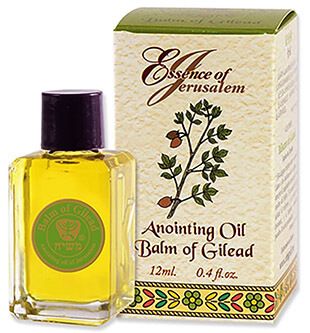Anointing Oil – Set Apart for God’s Purpose


Anointing oils have held a significant role throughout history, the uses ranging from the practical to the sacred. Throughout the Bible we hear of anointing oils being used for hospitality, physical healing, prayer and blessing, consecrating sacred spaces, and designating God’s favor and calling on prophets, priests, and kings.
Set Apart for God’s Purpose
In the Old Testament, anointing with oil was a demonstration of setting someone or something apart for a special purpose. In Exodus 30:22, God gives specific instructions for the formulation of sacred oil, including olive oil, myrrh, cinnamon, and cassia, that would be used to consecrate the altar of the temple.
Aaron and his sons are called to serve as high priests (Exodus 30:30), mediators between God and
the Israelite’s. The anointing of oil was the outward sign that they were set apart and ordained for this purpose.
The kings of Israel were anointed with oil when they were chosen to lead God’s people. Samuel anointed Saul and David. Zadok the priest anointed Solomon (2 Kings 1:39). Time and time again, we see that anointing oils are used to designated someone who has been chosen for a special purpose.
Physical and Spiritual Healing
James 5:14-15 addresses the healing of the heart as well as the body: “Is any one of you sick? He should call the elders of the church to pray over him and anoint him with oil in the name of the Lord. And the prayer offered in faith will make the sick person well; the Lord will raise him up. If he has sinned, he will be forgiven.” The use of anointing oils to aid in healing of the body symbolizes the work of the Holy Spirit in bringing wholeness to the mind and heart.
Anointing Oils Used Today
Today anointing oils are still widely used for both personal and spiritual benefits. Olive oil mixed with balsam, known as the chrism, is used in several sacramental ceremonies, such as baptism, confirmation, and ordination to priesthood. Many people use oils with prayer as a way to invoke the presence, blessing, and healing of the Holy Spirit.
Jerusalem Anointing Oils
The anointing oils from the Holy Land are created using virgin olive oil as a base and blended with the oils extracted from various herbs, spices, and botanicals native to the region, giving each oil unique properties and scents.
Olive oil has been a culinary, cosmetic, and household staple in the Middle Eastern and Mediterranean regions for thousands of years. Its health benefits have long been recognized by regional populations and in recent years has been confirmed by research. Olive oil is known for being an antioxidant and reducing inflammation, as well as being a source of healthy fats.
Pomegranate oil is made from a ruby-colored, orb-shaped fruit so ubiquitous to this region, you will find it depicted in mosaics and paintings, tapestries and ceramics, as well as used in local cuisine. The Latin name, punica granatam, means “seeded apple”. Pomegranates are named in Deuteronomy 8:8 among the seven species special to the Holy Land. Many traditions believe this is the fruit that tempted Eve in the Garden of Eden and with its many seeds it is regarded as representing fertility.
Pomegranates are a rich source of antioxidants; they are known to lower blood pressure, aid in digestion, and promote the regeneration of skin cells.
Frankincense and myrrh were rare and valuable oils. Both were used by priests as part of a holy oil in the temple (Exodus 30:34), and of course we know they were two of the precious gifts brought to the infant Jesus by the three Magi. These oils are still used today and are known to have anti-inflammatory and antimicrobial properties, as well as boosting immunity and overall wellness.
Spikenard is the oil that was used by Mary to anoint Jesus’ feet in John 12:3. It was considered very valuable and the cost of the oil she used would have been significant. Indian Spikenard, as it is known today, is still used for its calming and mood-elevating effects. Like many oils, it also has anti-inflammatory, bactericidal, fungicidal properties.
The value of anointing oils has long been recognized and is still an important part of healing, consecration, worship and prayer experiences today. Using anointing oils from the Holy Land is a way to connect with the spiritual traditions of the Bible.



Leave a Reply
You must be logged in to post a comment.